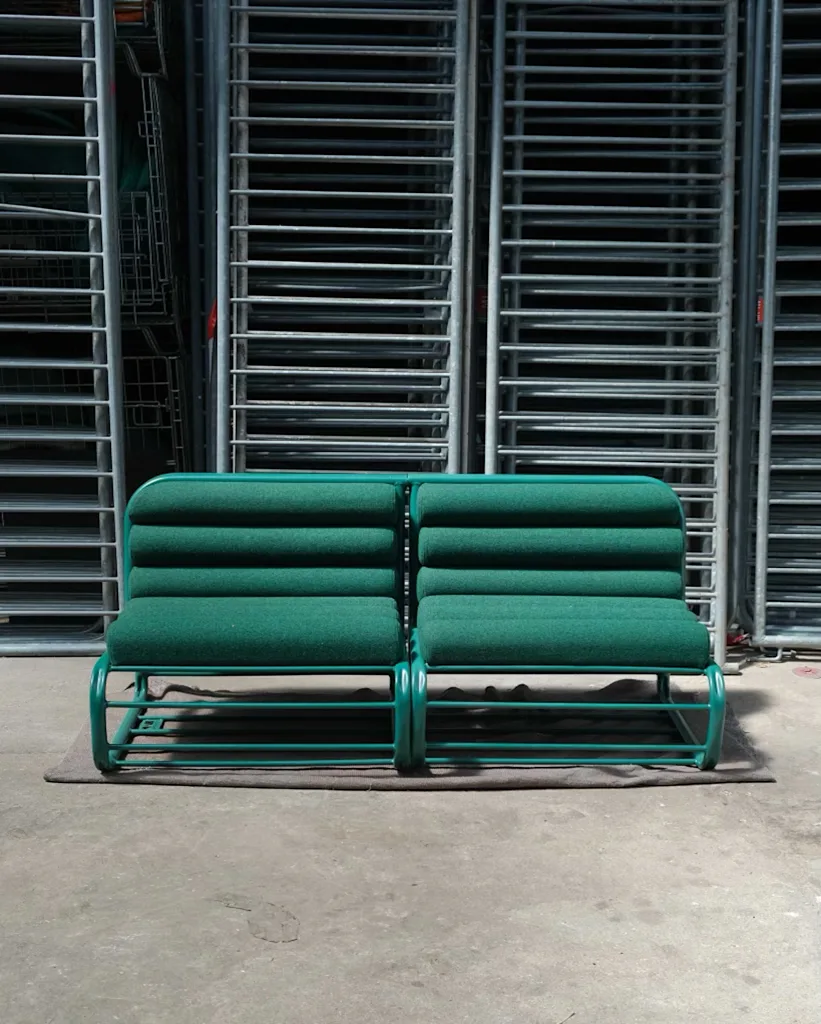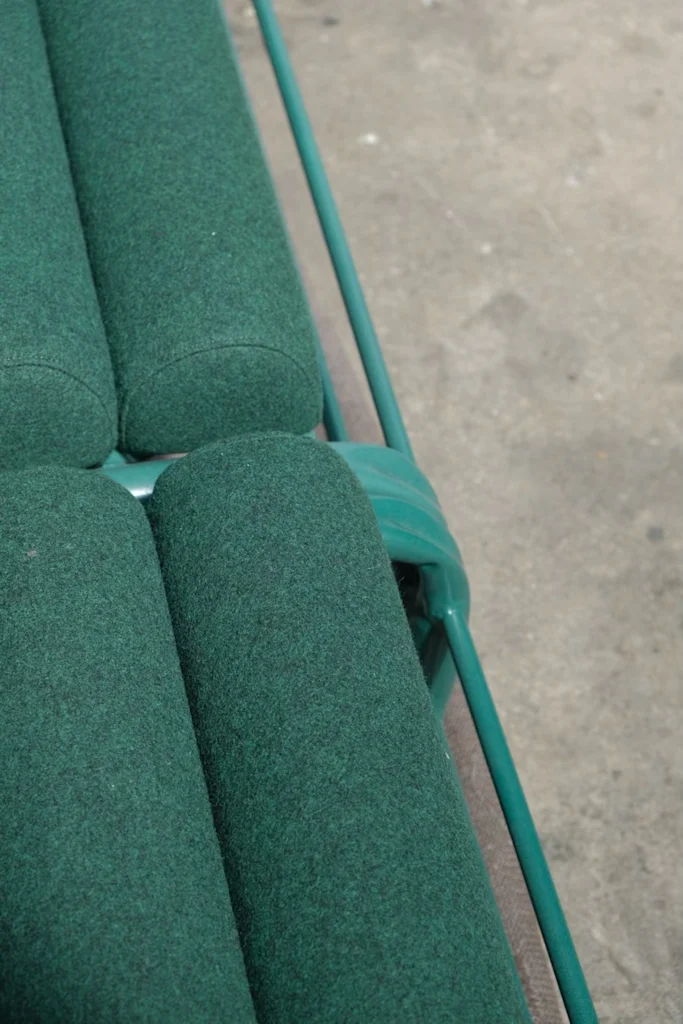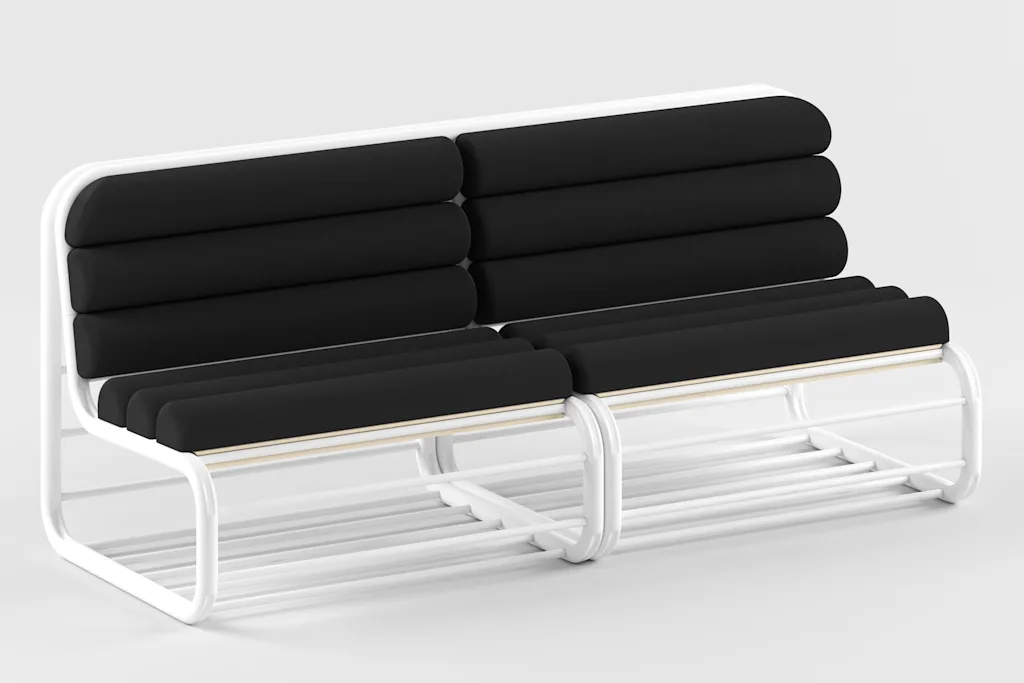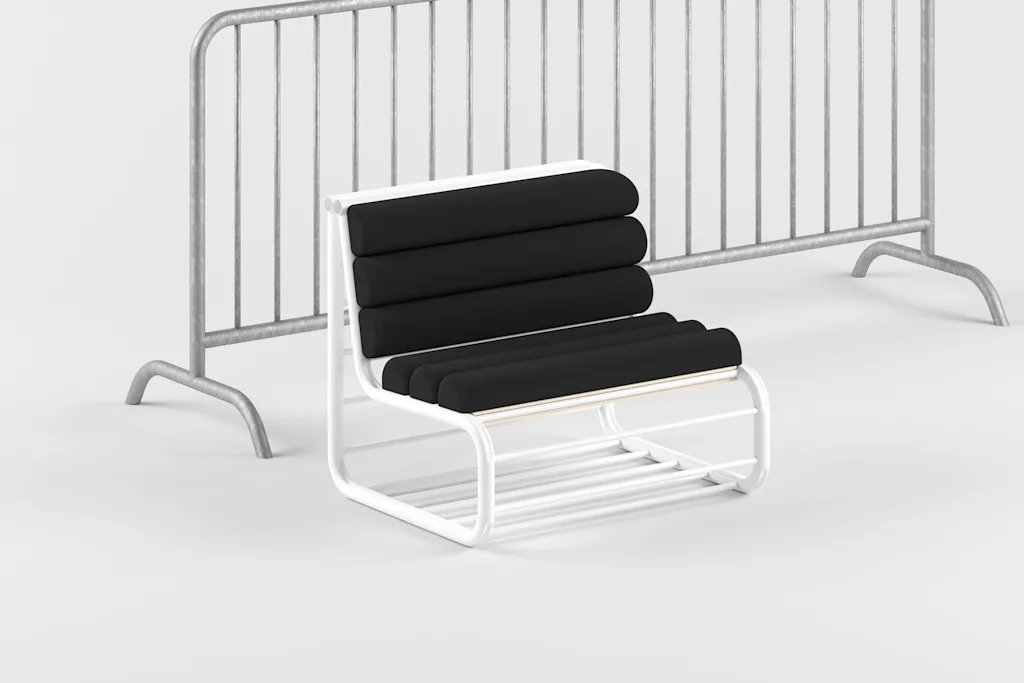Concert barriers are built to be baked in the hot sun, transported through busy venues, battered by excited concert-goers, and, ultimately, disposed of. A company in Paris is giving them a second life.
Maximum, a French furniture designer that specializes in turning industrial and municipal waste into luxe home goods, has now transformed defunct concert barriers into customizable, office-ready bench seating as part of its latest project called “Bultan.”
The firm works by first identifying industrial surplus that, because of overproduction, imperfections, or wear and tear, can no longer serve its original purpose. Then, they find a way to extend the lifetime of that material by fashioning it into something entirely new. Past projects include a line of chairs made from discarded ground plastics, a stool fashioned from imperfect banknotes, and a chic lamp built out of used fluorescent tubes.
Yesterday’s concert barriers become today’s found material
While concert barriers may be built to withstand force, they’re surprisingly susceptible to fatal flaws, according to Maximum.
“Their legs are their Achilles’ heel,” the Bultan’s product description reads. “Often crushed, they condemn the entire frame to the dumpster, even when it remains intact. A few bends are enough to transform a Vauban barrier into a structure for Bultan.”
Maximum is rescuing these out-of-commission frames to serve as the structure of its Bultan benches, offering them in either a colorful powder coated option or a sleek galvanized steel. And the company isn’t stopping there—every other element of the Bultan seat is also fashioned from a recycled material.

Repurposing unappealing wood and plastic scraps into works of art
To structurally support the benches’ seating and back rest, Maximum sourced wood from local workshops that was discarded due to the presence of wood knots, which caused them to be deemed aesthetically unusable. Because these slats are hidden under the Bultan’s cushions, they’re perfectly suitable for the task. For the cushions themselves, Maximum turned to La Maison de la Mousse et du Caoutchouc, a rubber goods supplier.

“Below a certain size, the production waste from La Maison de la Mousse et du Caoutchouc is deemed unusable,” the product page reads. “As thin and elongated as they are, the Bultan cushions fit between the bars and exploit this waste, which results in the scrapping of several cubic meters of high-quality foam every day.”

As a finishing touch, the company pulled rejected fabrics from the automotive interiors company Tesca to serve as the chairs’ dark-toned upholstery.
The result is a chair that visually evokes its origins as a concert barrier, but also appears perfectly suited for a professional or commercial setting. It’s a compelling case for reimagining how we might use industrial waste to more sustainably furnish our offices, waiting rooms, and public spaces.

